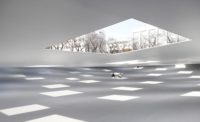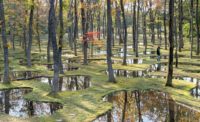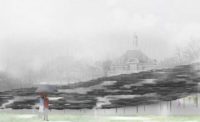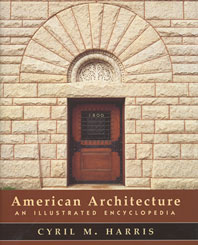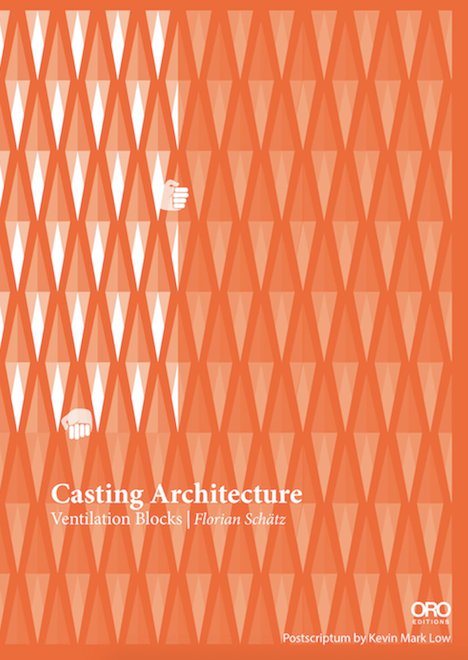Vijversburg Visitor Center by Junya Ishigami & Associates and Studio Maks
Tytsjerk, The Netherlands

The curving triangular form of the new glass pavilion follows the shape of the nearby pond and an allée of trees. Its roofline sits just just beneath the foliage of the trees.
Photo © Iwan Baan

The new glass pavilion streams forth from the 19th-century villa, its southern wing becoming merely a glass wall.
Photo © Iwan Baan

The curving pavilion is made up of approximately 75 laminated-glass panels that are 1.5 inches thick and as large as 9 feet by 8.5 feet.
Photo © Iwan Baan

Tobias Rehberger’s design includes a colorful treehouse.
Photo © Iwan Baan

Piet Oudolf created a water labyrinth.
Photo © Iwan Baan

A star-shaped hedge leads explorers down six different paths, each with a different surprise.
Photo © Iwan Baan

The center of the new pavilion serves as a venue for events.
Photo © Iwan Baan

The center of the new pavilion serves as a venue for events.
Photo © Iwan Baan

Image courtesy Studio Maks

Image courtesy Studio Maks

Image courtesy Studio Maks

Image courtesy Studio Maks












What happens when nature, science, and architecture come together? If done well, a work of art is created. A recent example of this sits hidden in the grounds of Park Groot Vijversburg in Tytsjerk, a small town in the Dutch province of Friesland, 93 miles northeast of Amsterdam. It is a slender glass pavilion designed by Studio Maks and Junya Ishigami & Associates as an extension to the park’s 19thcentury villa. The Rotterdam- and Tokyo-based architects, respectively, were not looking to create a structure with a distinct shape but a building that would “melt into the environment,” as Ishigami puts it. Indeed, by not only blending nature and architecture, but using the latter to emphasize the first, they achieved something much more meaningful than an eye-catching form.
Additional Content:
Jump to credits & specifications
Both the villa and the landscape of the park, known to locals as Bos van Ypey (after the estate’s first owners), are considered national treasures, so the design had to respect all existing elements. According to Studio Maks founder Marieke Kums, “The pavilion exists more as a new landscape than as a new building.” It presents itself as a naked, triangular shape streaming forth from the villa, whose three vertices extend into long wings that adapt to its surroundings. While its northern facade accompanies the curve of the preexisting pond, its eastern side straightens up to follow an allée of trees, itself considered a monumental element of the park. Taking further cues from the site, the pavilion’s floor sinks about 3 feet below grade, so that its roof does not clash with the treeline; its wings—the southern one merely a glass wall—stretch up to 115 feet in length, to accompany each path.
If nature shapes the building, then its key material—glass—gives meaning to that shape, and, in turn, transforms the building’s relationship to nature by allowing the landscape to be constantly seen, mirrored, and multiplied. The structural engineering team, formed by Japanese engineer Jun Sato and Dutch firm ABT, understood from the start that this transparency was the project’s central feature. So, while the architects had studied the use of brick and wood structural elements, as well as steel columns, the engineers soon concluded that “the ultimate solution would be to use the glass facade itself as the loadbearing structure,” says Han Krijgsman, the main engineer at ABT.
The glass walls are attached like balustrades—the panels are clamped to the floor structure without visible supports. The roof structure is made of a carefully calculated web of steel and wood beams that help distribute the load equally across all glass panels, and its triangular middle section functions as a diaphragm connecting the three wings. “Innovation, in our opinion, means advancing with technical solutions in a controlled way,” Krijgsman says. “Here we combined years of knowledge of glass-bearing structures and balustrades to expand its use in size and purpose. Similarly, existing techniques were used to make custom-size connections.”
From this technical feat emerged another challenge: the climate control of a glass-enveloped building without windows or mechanical ventilation systems. ABT designed a natural ventilation system that consists of hidden floor and roof ducts and hatches that can be controlled remotely.
Both Kums and Ishigami worked at SANAA before establishing their own practices, and, though their time there never overlapped (they did previously collaborate on a master plan for Dubai), it is clear how it pointed their architecture in a similar direction—“a fluent and very much Japanese way of designing with space, of blending architecture and the environment, letting nature shape the building, and reducing the contrast between the exterior and interior,” Kums says. So, though the glass pavilion certainly calls to mind such designs by SANAA as the Toledo Glass Pavilion (2006), Grace Farms, or previous work of Ishigami’s like the Kanagawa Institute of Technology Workshop, the similarities have less to do with the choice of glass as a prominent material, or the fluid strokes of the design, and more with a common goal of achieving an architecture that gives people a different experience of nature.
For all its care in keeping the landscape and villa intact, the pavilion fails to fully answer the initial brief, which specified a visitor center complete with a tearoom, shop, information desk, and toilets. “We asked for a functional building, and the pavilion is not functional,” admits park manager Audrey Stielstra in a matter-of-fact way. “If you look at it in practical terms, the building is problematic. Yet a practical building requires walls for each separate program, and that would clash with the landscape. What Kums and Ishigami designed is an artwork. In order to use this artwork as a building, people need to be creative, and that, I think, is very beautiful.”
The architects joined the historic villa and the new pavilion so that they complement each other’s functions while still being able to offer the experience of two independent structures. The pavilion is only accessible for events, serving as a venue for lectures, seminars, exhibitions, small concerts, and weddings.
Open to the public since 1906, the estate became too small in the late 1990s for the crowds who flooded its art-filled 37 acres. Kums and Ishigami’s project is part of a large-scale renovation and expansion initiated by Op Touten- burg Foundation (owners of the estate since 1892) to improve the visitor experience. Taking note of the appeal of art in nature, they launched four competitions for artists and designers to submit their ideas for different parts of the now enlarged 49.4-acre park.
The first three of those designs—a science park by German artist Tobias Rehberger, a giant star-shaped hedge by Rotterdam-based Lola Landcsape Architects, and a playground and water labyrinth by Dutch garden designer Piet Oudolf—were realized in September 2015. As nearby Leeuwarden, the capital of Friesland, prepares to be a European Capital of Culture in 2018, Park Groot Vijversburg, with its sinuous new pavilion and art-filled grounds lively with visitors, will play an important role as one of the area’s most active cultural centers.
CreditsArchitect: STUDIO MAKS, Westewagenstraat 66, 3011 AT Rotterdam, The Netherlands. Personnel in architect's firm who should receive special credit: STUDIO MAKS:
Architect of record: STUDIO MAKS + Junya Ishigami & Associates
Engineers Structural: ABT B.V. & Jun Sato Structural Engineer
Consultants Landscape historical analyses: SB4 General contractor: Jurriens Noord & Friso Bouwgroep Photographer: Iwan Baan
|
SpecificationsStructural System Manufacturer of any structural components unique to this project: Glass system: Steinfort B.V. & IFS-SGT special glass technology Exterior Cladding Metal/glass curtain wall: Structural glazing: Steinfort B.V. & IFS-SGT special glass technology Precast concrete: On site concrete: Veenstra B.V. EIFS, ACM, or other: Jurriens Noord & Friso Bouwgroep Moisture barrier: Jurriens Noord & Friso Bouwgroep Other cladding unique to this project: Roof edge, anodies aluminum: Hospers Roofing Other: Resin bound gravel: Intercodam in collaboration with Wifra Windows Metal frame: Matel Metaal B.V. Glazing Glass: IFS-SGT special glass technology Doors Entrances: Matel Metaal B.V. Metal doors: Matel Metaal B.V. Hardware Closers: Dorma Interior Finishes Acoustical ceilings: STO Isoned B.V. Resilient flooring: Concrete flooring, Veenstra B.V. Furnishings Chairs: Fritz Hansen / Arne Jacobsen Lighting Interior ambient lighting: Zumtobel Downlights: Zumtobel Tasklighting: Zumtobel Exterior: NA Dimming system or other lighting controls: Hiemstra B.V. Conveyance Elevators/escalators: NA Accessibility provisions: NA Plumbing Reekers .B.V. Energy Energy management or building automation system: Reekers B.V. Photovoltaic system: NA Other unique products that contribute to sustainability: NA
|

